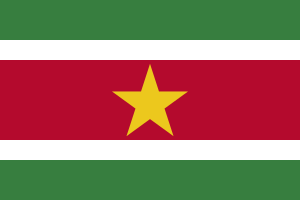Ramsewak Shankar
Ramsewak Shankar (born November 6, 1937) is a Surinamese politician who was the 4th President of Suriname, serving from 1988 to 1990.[1] His government was overthrown by Dési Bouterse leading a bloodless military coup. Shankar had previously served as Agriculture & Fisheries Minister from 1969 to 1971.
Ramsewak Shankar | |
|---|---|
रामसेवक शंकर | |
| 4th President of Suriname | |
| In office January 25, 1988 – December 24, 1990 | |
| Vice President | Henck Arron |
| Preceded by | L.F. Ramdat Misier |
| Succeeded by | Ivan Graanoogst |
| Personal details | |
| Born | November 6, 1937 |
| Political party | VHP |
Shankar is a member of the large ethnic South Asian community in Suriname. He had studied at Wageningen University in the Netherlands.[2] After his return to Suriname, he became active in the Progressive Reform Party. He supported independence in 1975.
Career
Shankar was elected as President by the National Assembly after a parliamentary election was held in November 1987.[3] The ruling military regime had led the National Assembly to adopt a new constitution, which permitted coup leader Dési Bouterse to remain as head of the army.[4] Ramsewak Shankar was a former agriculture minister and succeeded Ramdat Misier as the President of Suriname.[3]
In 1989 Shankar agreed to pardon the Maroons, or bush negroes, who had been waging civil war for years against the military in an effort to preserve their autonomy within their traditional territory in the rain forest. He discussed the possibility of their members keeping their arms for use when living within the rain forest. Dési Bouterse and the National Democratic Party opposed the agreement,[5] calling it a violation of the constitution. They said Shankar's proposal would lead to legalizing an independent military force.
On 22 December 1990, Bouterse resigned from the Army after a disagreement with President Shankar.[6] On 24 December a military coup known as the "telephone coup" ousted President Shankar, and Ivan Graanoogst was appointed as Acting President.[6] On 29 December, Johan Kraag was chosen by the National Assembly as President of Suriname.[6] On 30 December, Kraag asked Bouterse to return,[6] who became Commander of the Army on 1 January 1991.[7]
See also
References
- http://www.gov.sr/kabinet-van-de-president/over-het-kabinet/historie.aspx
- "Wageningen University: Facts & Figures | Radio Netherlands Worldwide". M.rnw.nl. 2011-11-25. Archived from the original on 2013-12-24. Retrieved 2012-07-06.
- "Timeline Suriname". BBC News. Retrieved 23 June 2020.
- "Suriname Coup Leaders Had Power Already". New York Times. 27 December 1990. Retrieved 23 June 2020.
- "Suriname's Leader and Rebel Chief Vow to Negotiate Uprising's End". New York Times. 27 March 1991. Retrieved 23 June 2020.
- "Nieuwe President vraagt Bouterse terug". Leidse Courant (in Dutch). 31 December 1990. Retrieved 20 June 2020.
- "Bouterse weer terug ak bevelhebber leger". Reformatorisch Dagblad via Digibron (in Dutch). 2 January 1991. Retrieved 20 June 2020.
| Political offices | ||
|---|---|---|
| Preceded by Fred Ramdat Misier |
President of Suriname 1988–1990 |
Succeeded by Ivan Graanoogst |

